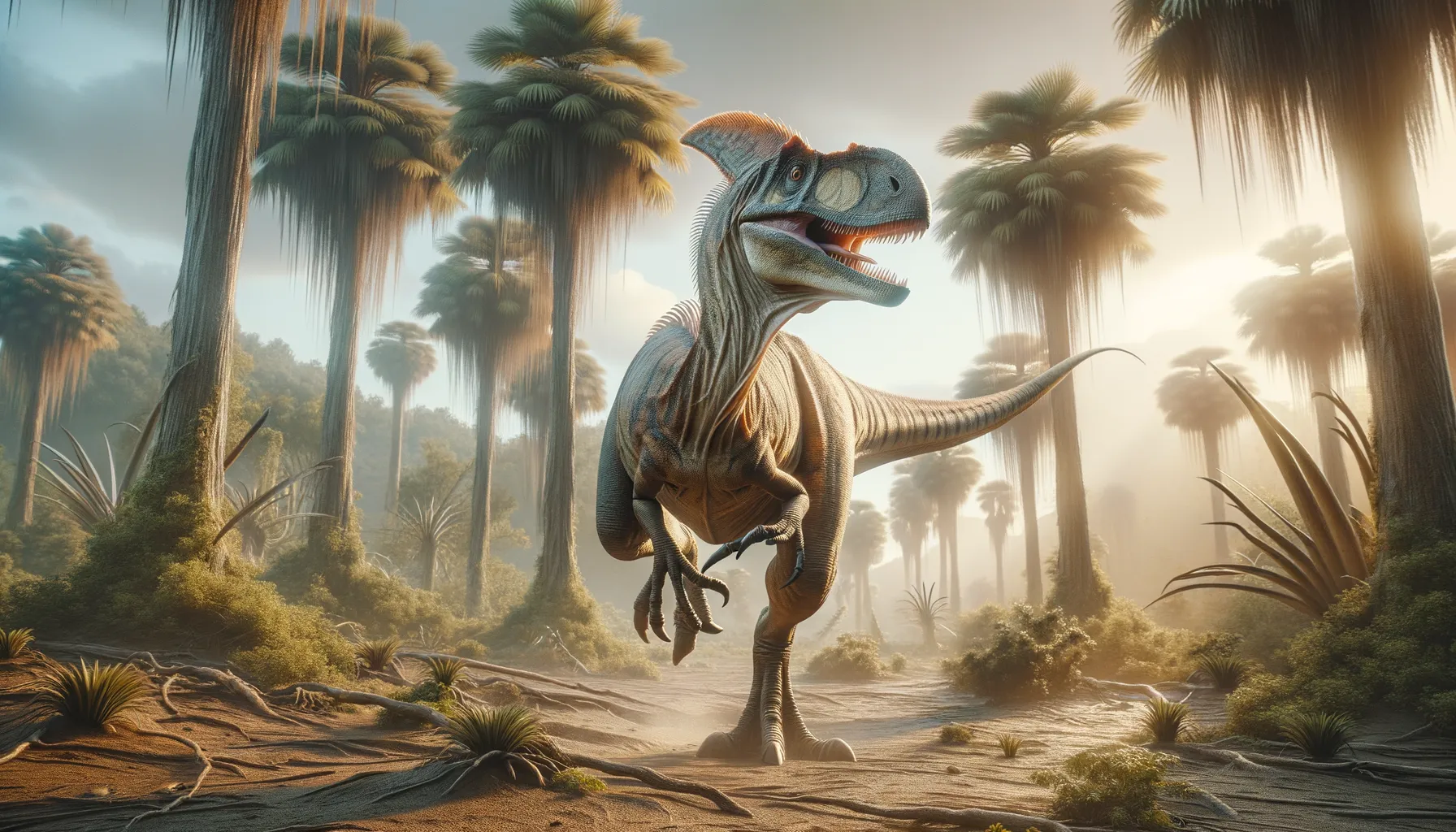
Fulgurotherium
Swift inhabitant of prehistoric landscapes.
Period
Cretaceous
Length
Roughly 2-3 meters (6.6-9.8 feet) long.
Height
About 1 meter (3.3 feet) at the hip.
Weight
Approximately 50 kilograms (110 pounds).
Fulgurotherium was a small dinosaur known for its bipedal stance and agility. It inhabited the Cretaceous period and has been mostly found in Australia. This dinosaur is believed to have been a part of the ornithopod family, which were generally herbivorous and had beaked mouths. Despite being less famous than other dinosaurs, Fulgurotherium offers important insights into the diversity of prehistoric life in southern continents.
Diet
Fulgurotherium was primarily herbivorous, feeding on a diet of plants available during its time. The dinosaur likely consumed ferns, cycads, and other low-lying vegetation, making use of its beak-like mouth for cropping leaves.
Hunting
Unlike carnivorous dinosaurs, Fulgurotherium did not hunt other animals. Instead, it likely foraged for plant material. Its small size and nimble body may have helped it evade predators in its environment.
Environmental challenges
During the Cretaceous period, Fulgurotherium faced various environmental challenges, including fluctuating climates and the presence of large predators. Additionally, habitat changes due to volcanic activity or shifting land masses would have influenced the availability of food resources. These dinosaurs had to adapt quickly to survive amidst such dynamic conditions.
Speed
Estimated to have been moderately fast.
Lifespan
Could have lived up to 15-20 years in the wild.
First discovery
First found in Australia in the early 20th century.
Fun Facts
- Fulgurotherium was a small, bird-like dinosaur that roamed the ancient lands of Australia during the Cretaceous period.
- This dinosaur's name means 'lightning beast', inspired by the speed and agility it likely possessed.
- Fulgurotherium was an herbivore, feasting on a diet of plants and leaves in its prehistoric habitat.
- The first fossils of Fulgurotherium were discovered in the early 20th century, sparking curiosity about Australia's ancient past.
- Though not as famous as other dinosaurs, Fulgurotherium offers insight into the diverse and unique prehistoric wildlife of Australia.
- Researchers believe Fulgurotherium was a fast runner, potentially helping it escape predators in its environment.
- Fulgurotherium is part of the larger group of dinosaurs called ornithopods, which were widespread across different continents.
Growth and Development
Fulgurotherium likely experienced rapid growth during its juvenile stages, allowing it to reach maturity swiftly in a predator-rich environment. As with many dinosaurs, it would have undergone distinct growth phases, likely characterized by changes in body size and weight. Fossil evidence suggests that their skeletal structure adapted for rapid growth and agility.
Habitat
This dinosaur primarily inhabited what would have been forested and floodplain regions. These environments provided ample vegetation, ideal for the herbivorous Fulgurotherium. The varied terrain would also offer refuge from predators and opportunities for social interaction with other herbivorous species. Its habitat allowed for foraging in relative safety while supporting its dietary needs.
Interaction with other species
Fulgurotherium likely coexisted alongside other herbivorous dinosaurs, potentially forming mixed-species groups for protection. It would have had to navigate relationships with predators, maintaining vigilance against attacks. Social behaviors may have included basic communication signals to alert others of threats or to coordinate movements within its group.
Natural lifespan
In optimal conditions, it lived around 15-20 years.
Reproduction
Like many dinosaurs, Fulgurotherium is thought to have laid eggs, likely in nests built on the ground. Parental care behaviors are speculative, but it may have involved guarding the nest and young from predators. Clutch size and specific practices remain largely unknown due to limited fossil evidence.
Social behaviour
Fulgurotherium may have lived in groups to enhance its survival chances against predators. Social interactions likely included basic vocalizations or displays to communicate with one another. The dinosaur's social behavior would have played a role in foraging efficiency and predator vigilance.
Fossil locations
Fossils of Fulgurotherium have primarily been found in Australia, particularly in areas linked to the Cretaceous period. The first discoveries were made in the early 1900s, contributing significantly to the understanding of dinosaur diversity in the southern hemisphere. These sites continue to be of interest for paleontologists studying dinosaur evolution.
